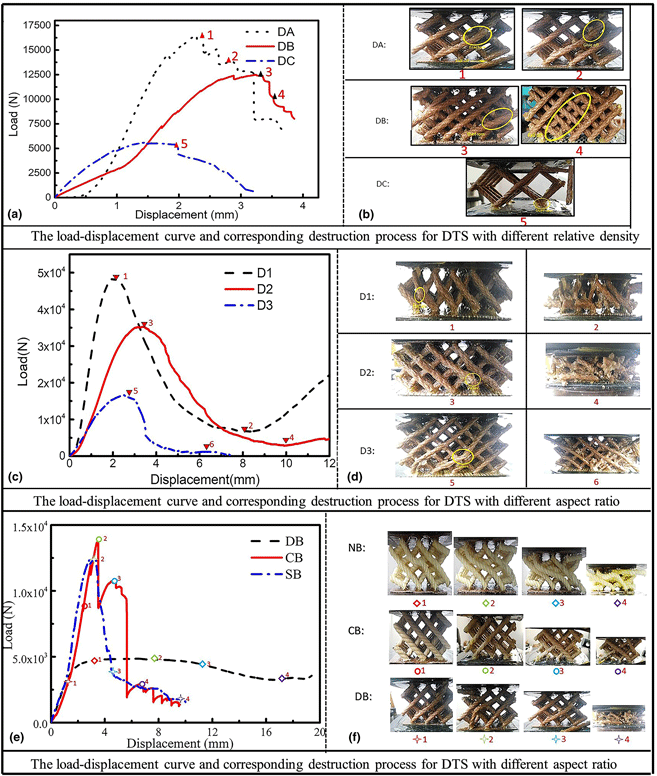Article contents
Compressive properties of the lattice structure with a new process
Published online by Cambridge University Press: 18 November 2020
Abstract

With the aim of optimizing the traditional construction process of a fiber-reinforced lattice structure, the present study modified a previously proposed technique called “truss stacking and node gluing.” To explicitly investigate the structural compressive properties (compressive strength and compressive modulus under the flat pressure), the geometrical parameters, material properties, and topological configuration were examined in detail. Additionally, the present study conducted the relevant theoretical analyses to predict the possible destruction modes and compressive properties. All the samples were tested with a universal testing machine at a rate of 2 mm/min using the ASTM-C365 standard. The results showed that compressive properties are positively related to the relative density and negatively related to the aspect ratio. It was also found that the compressive performance for different materials was in the following order (from good to bad): cotton-fiber reinforced epoxy composite (CREC), jute-fiber reinforced epoxy composite (JREC), and nylon-fiber reinforced epoxy composite (NREC). Furthermore, the mixed topological structure performed as well as the square structure, and they both overmatched the diamond structure. Lastly, the accuracy of the theoretical analysis was evaluated by comparing the theoretical values and the experimental values.
Keywords
- Type
- Article
- Information
- Copyright
- Copyright © The Author(s), 2020, published on behalf of Materials Research Society by Cambridge University Press
References
- 1
- Cited by





